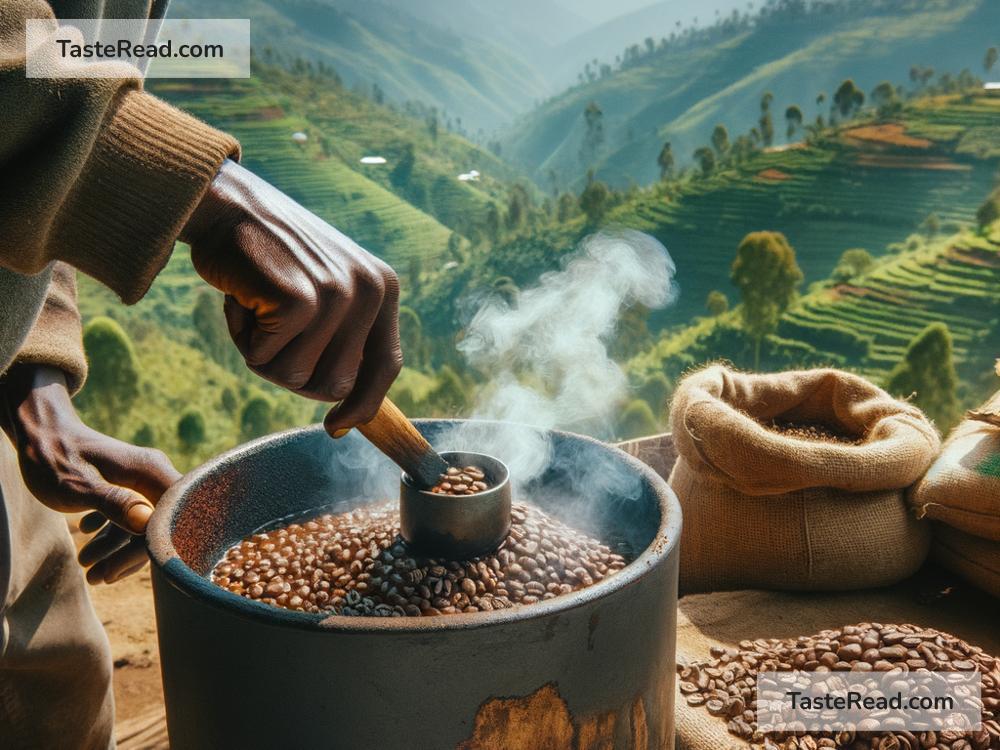Exploring Robust Coffee Roasting Crafts in the Ethiopian Highlands
Coffee is more than just a drink—it’s a culture, a tradition, and a livelihood in Ethiopia. Widely considered the birthplace of coffee, Ethiopia has a deep and beautiful connection to this magical bean. From the fertile soil of the Ethiopian Highlands to the artful roasting methods passed down through generations, coffee plays a central role in everyday life for millions of Ethiopians and captivates coffee lovers worldwide. Let’s dive into the world of Ethiopian coffee roasting crafts in simple terms and discover why this country is so special in the coffee world.
Ethiopia: The Birthplace of Coffee
The story of coffee begins in Ethiopia, thousands of years ago. Legend has it that a goat herder named Kaldi noticed his goats behaving energetically after eating red cherries from a plant. Curious, he tried the cherries himself and found they gave him a burst of energy. This plant later became known as the coffee plant. While the story has passed through countless generations, what remains clear is that Ethiopian coffee is central to both history and culture.
The Ethiopian Highlands, with their temperate climate, rich soil, and high altitude, are the ideal environment for growing coffee. These unique conditions give Ethiopian coffee its unmistakable flavor—notes of fruitiness, floral aromas, and an almost wine-like quality. Ethiopia is also home to some of the world’s finest coffee varieties, including Sidamo, Yirgacheffe, and Harrar.
Coffee as Culture in Ethiopia
Coffee isn’t just a morning pick-me-up in Ethiopia—it’s a cherished ritual. One of the most important traditions is the Ethiopian coffee ceremony. This ceremony is more than just brewing coffee; it’s a social event where family and friends gather to connect, celebrate, and share stories. The process is slow and intentional, performed with care and respect.
The preparation starts with green coffee beans, harvested straight from the plant. These raw beans are roasted in a pan, often over an open flame, filling the air with smoky, earthy aromas. The beans are then ground, brewed, and served in small cups, called cini. The coffee is usually accompanied by snacks, such as popcorn or bread, and served three times to guests, symbolizing friendship and hospitality.
The Ethiopian coffee ceremony represents something deeper than just drinking coffee; it’s a reminder of togetherness, appreciation, and slowing down to enjoy life’s moments.
The Craft of Coffee Roasting in the Highlands
While large coffee enterprises focus on mass production, Ethiopian coffee roasting is rooted in tradition and craftsmanship. For many families in the Highlands, coffee roasting is a skill honed over generations. Roasting is the process that transforms raw, green coffee beans into the rich, aromatic brown beans we recognize.
The roasting process is done by hand, often in small batches, to preserve quality. It begins with carefully selecting coffee beans, which are often grown locally and picked fresh. The beans are placed in a metal pan or earthen vessel and stirred over a fire. This manual process ensures that every bean is roasted evenly.
Timing is key. Expert roasters use their senses—watching the beans change color, smelling the evolving aromas, and listening to the crackling sounds—to determine the perfect roast level. Whether it’s a light, medium, or dark roast, each level enhances different flavors in the coffee. In Ethiopia, medium roasts are popular as they bring out the natural sweetness and vibrant notes of the beans.
Once the beans are roasted, they are ground using a traditional mortar and pestle and brewed in a jebena, a clay coffee pot. This method brings out the pure and authentic taste of Ethiopian coffee.
Why Ethiopian Coffee Stands Out
Ethiopian coffee is famous worldwide for several reasons. First, Ethiopia grows coffee in its most natural form. Unlike many coffee-growing regions, Ethiopia’s coffee plants are often grown among other plants and trees in a biodiverse environment. This provides shade, enhances soil quality, and results in organic coffee beans packed with unique flavors.
Second, Ethiopian coffee varieties are mostly native heirloom species. These ancient plants are not hybrids or genetically modified, making them incredibly diverse in flavor. In fact, Ethiopia has thousands of coffee varieties that grow naturally, which is far more than any other country.
Finally, the traditional roasting and brewing methods used in Ethiopia allow the beans’ natural quality to shine through. The Ethiopian Highlands’ coffee roasting crafts combine skill, patience, and passion, ensuring that every cup feels like a celebration of the land and culture.
Supporting Ethiopian Coffee
By enjoying Ethiopian coffee, coffee lovers around the globe support the hardworking farmers and craftspeople who dedicate their lives to growing and roasting coffee. Many farmers in the Ethiopian Highlands rely on coffee as their main source of income, but challenges like climate change and fluctuating market prices can make their work difficult. Supporting ethical coffee brands that source beans directly from Ethiopian growers helps ensure that these communities can thrive.
Final Thoughts
Exploring coffee roasting in the Ethiopian Highlands reveals more than just delicious coffee; it’s a glimpse into a rich history, culture, and tradition that spans generations. The artful craft of roasting, paired with Ethiopia’s perfect coffee-growing conditions, delivers some of the best coffee in the world. Whether you’re savoring a cup of Sidamo, Yirgacheffe, or Harrar, you’re taking part in a timeless tradition born in the Ethiopian Highlands.
Next time you brew your coffee, remember the journey it took—from the lush hills of Ethiopia to your cup. Take a moment to appreciate not only the flavors but also the culture, care, and craftsmanship behind every sip.


